Tuesday Triage #47
- TUESDAY TRIAGE #47 by Vadim Drobinin
- On traveling again
- Surf and Turf Shumai
- Up Stream
- Duck'n Donuts
- Hake fillet
- Martinez
- Mezcal Negroni
- The Illusionist
- The Grand Finale
- Old-Tabashioned Late Hour & Taketsuru Blossum
- Things I enjoyed reading
- 1. Who’s Afraid of the Dog-Banditti? by Stephanie Howard-Smith
- 2. I moved my workspace to VR, here's what I learnt by @backmeupplz
- 3. Why Thursday was fish day in the USSR by Alexandra Guzeva
- 4. The T-34 keyboard layout by Jonas Hietala
- 5. Notes on Craft by Jonathan Lee
- 6. On 'Biweekly' and 'Bimonthly'
- 7. Writing a Technical Book by @soapdog
- 8. No Design is the Best Design by @bgrgndzz
- 9. The Mystery of the $113 Million Deli by Jesse Barron
- 10. Exploring android development on iPad by @arazabishov
- Things I didn't know last Tuesday
- 1. Xuixo
- 2. East Frisian tea ceremony
- 3. Anthony Curcio
- 4. Battersea Reference Library
- 5. Mexican Elbow
- 6. Xerox animation and Disney
- 7. Jacquard machine's punched cards
- 8. The price of batteries has declined by 97% in the last three decades
- 9. Brier score
- 10. Dollar Baby
- Book of the week
- Thank you and see you in a week!
TUESDAY TRIAGE #47
by Vadim Drobinin ¶
Your weekly crème de la crème of the Internet is here!
08.06.2021 (read in browser)
On traveling again ¶
This week we got back on the road for a proper multiple days trip out of town.
Trips for me are mostly about experience, which might be driven by pretty much anything, from people to sights to food, and this time it was mostly the latter.
And by food I rarely stick to the common definition of a hearty meal: it might be pretty much anything from a sour candy from a Liverpool shop to a Mancunian lunch to a terrific cocktail in a hidden bar.
A few highlights though:
Surf and Turf Shumai ¶
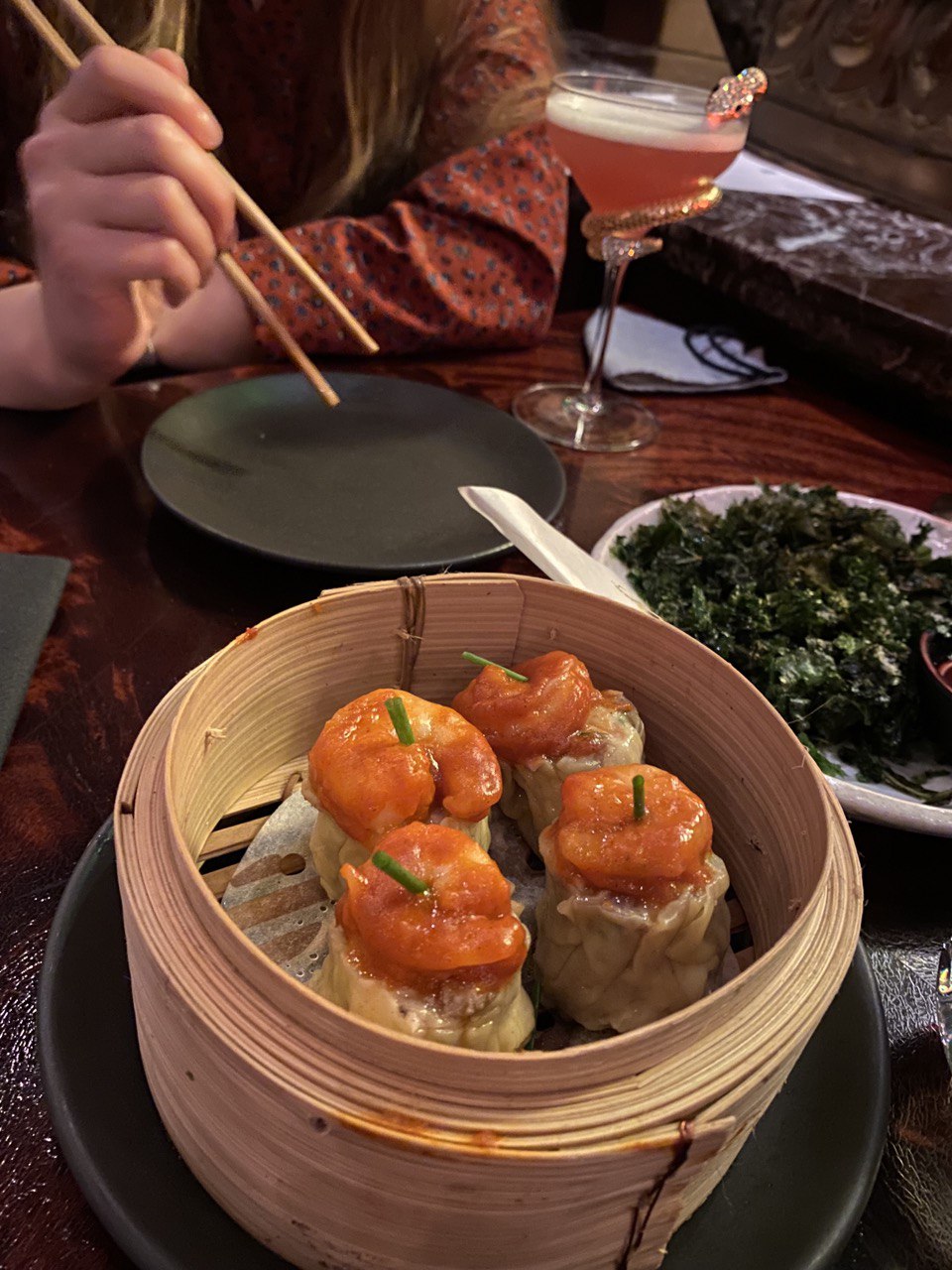
Sticky red prawns, beef short rib, and spring onion -- a very simple combination but works nice!
Up Stream ¶
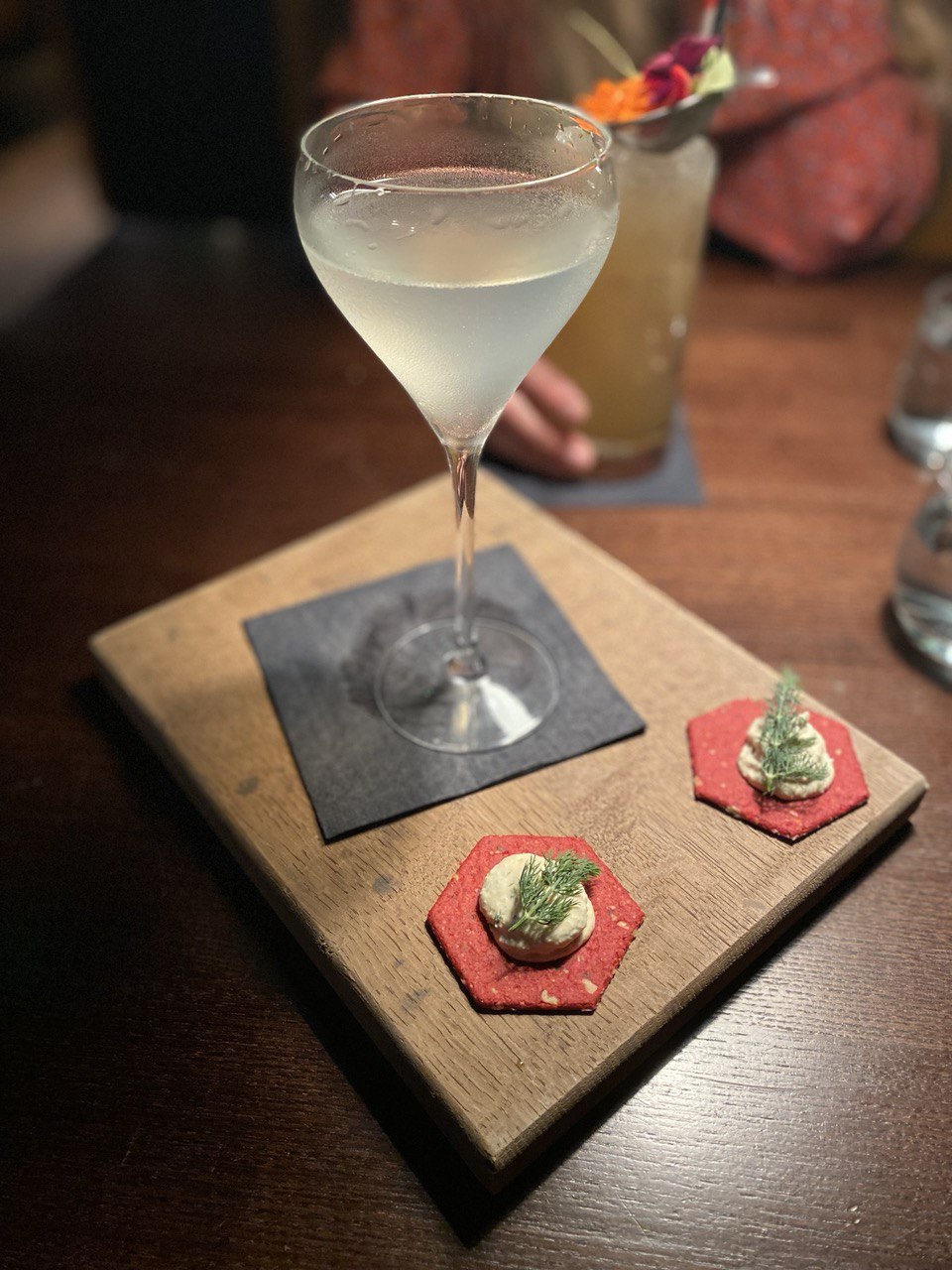
Something akin to a dry martini: salmon-infused gin, dill syrup, served under a dome with some smoke, and garnished with beetroot crackers with sour cream and mustard.
Duck'n Donuts ¶
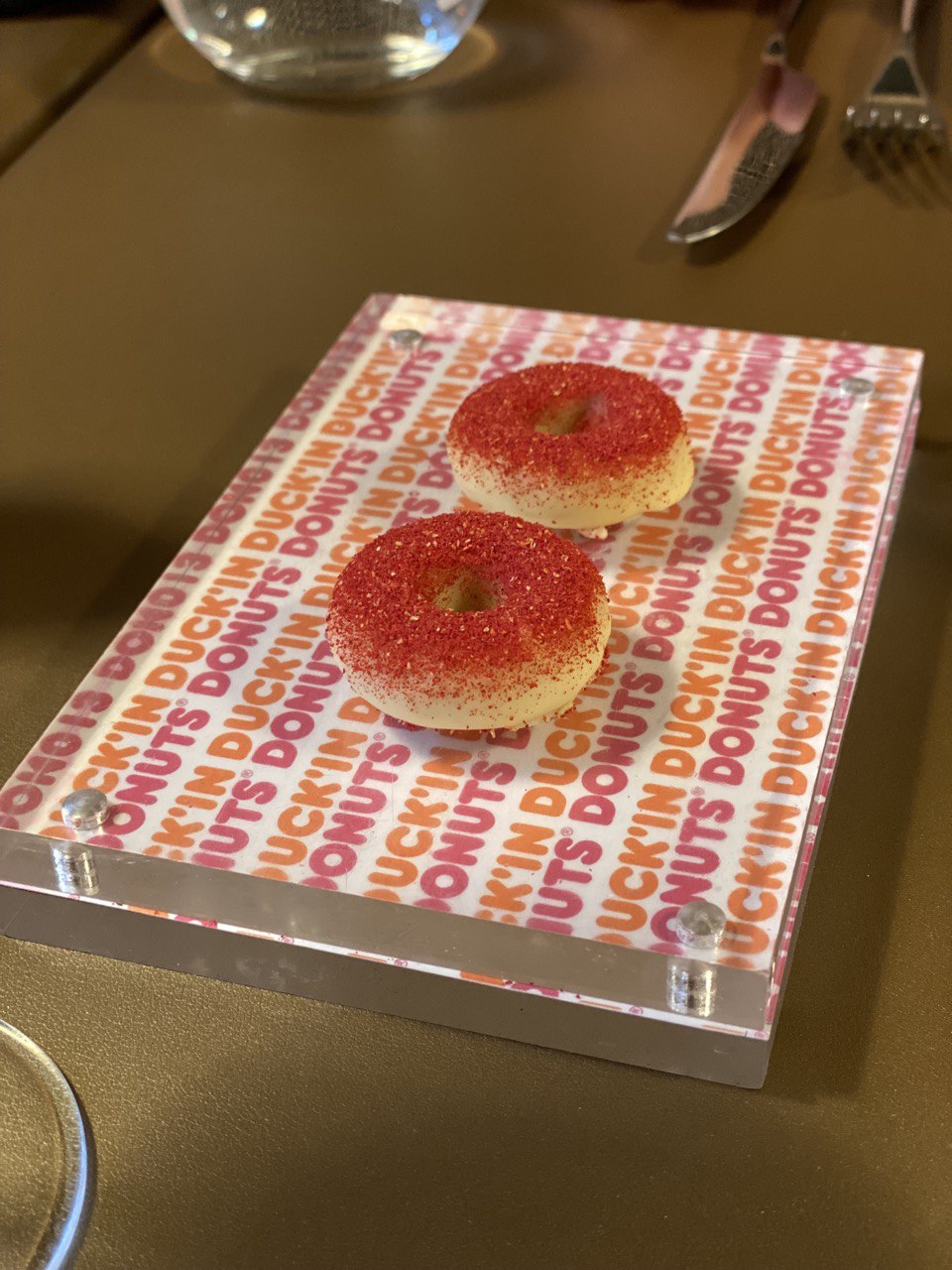
Looks like donuts but in facts this is frozen white chocolate filled with foie gras ganache - almost like the foie gras ferrero rocher I made once.
Hake fillet ¶
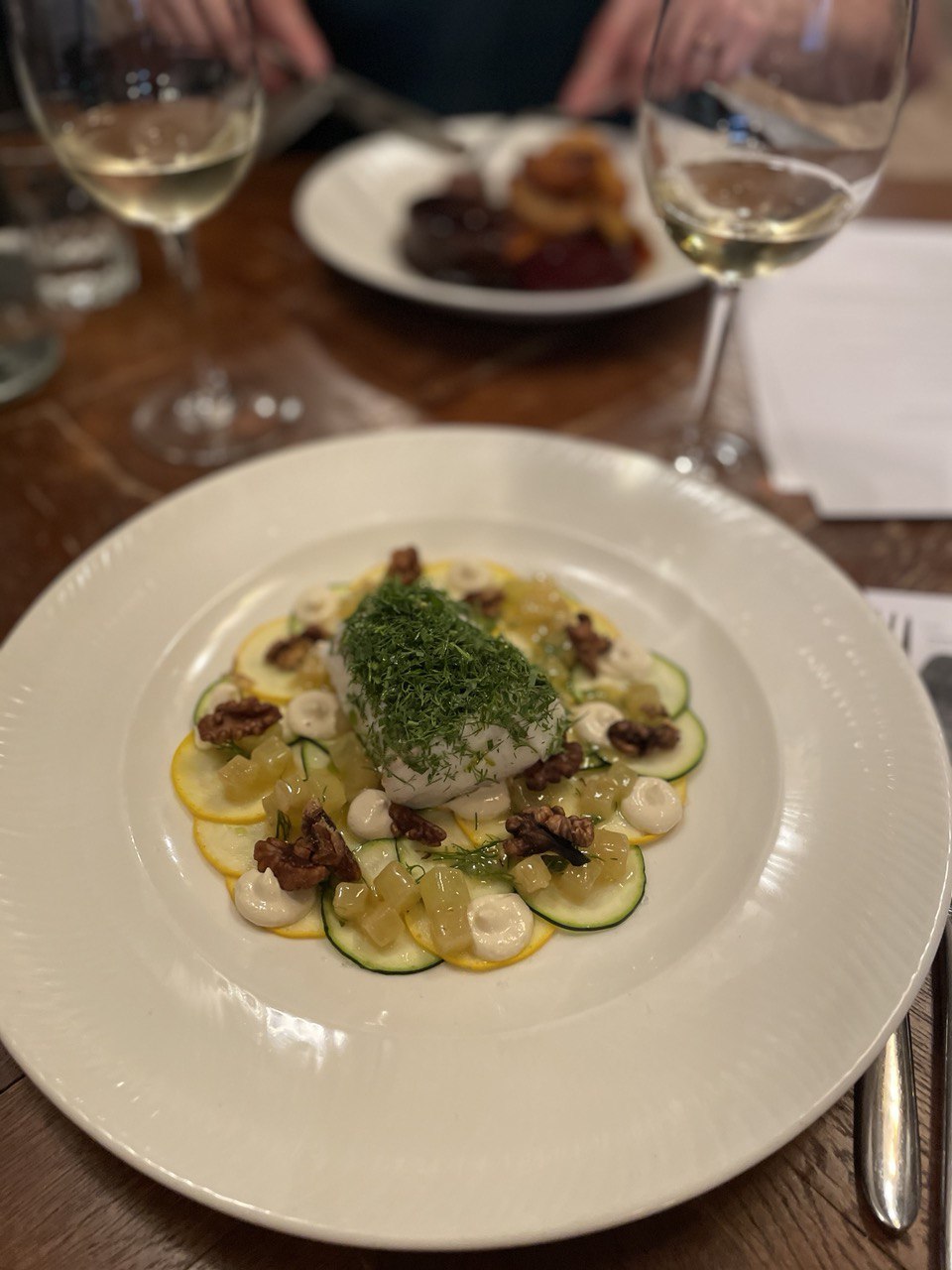
Salad of summer courgettes, taramasalata, toasted walnuts, smoked apple and dill dressing - a great and very unexpected dish.
Martinez ¶
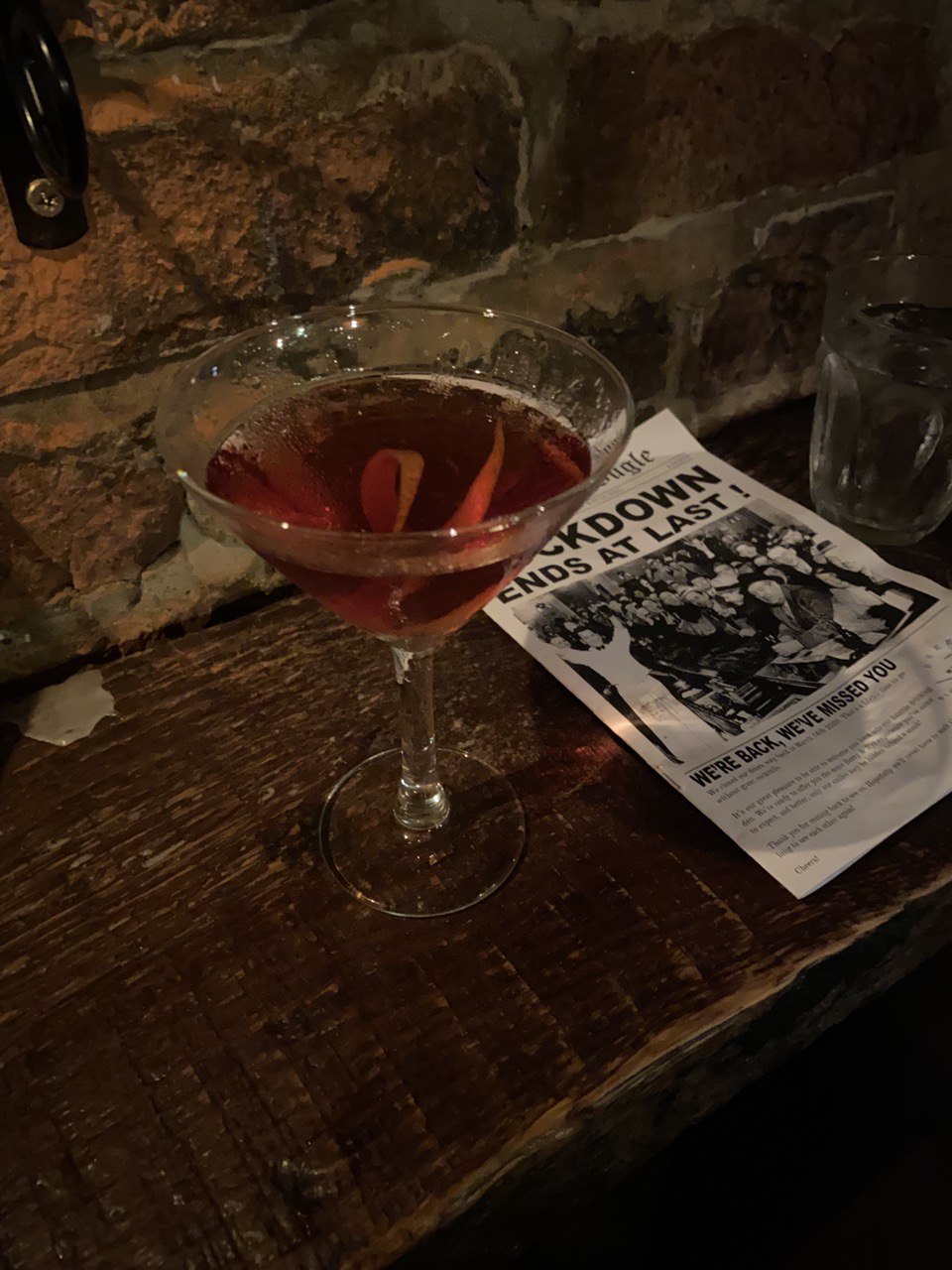
One of a very few Martinezes based on genever, not gin. I am a huge fan of the drink and get it most of the time, but this is a really pleasent riff (or maybe an attempt to find out how it was meant to be).
Mezcal Negroni ¶

A nice twist on the classics, but with a splash of dry vermouth and plenty of mezcal.
The Illusionist ¶
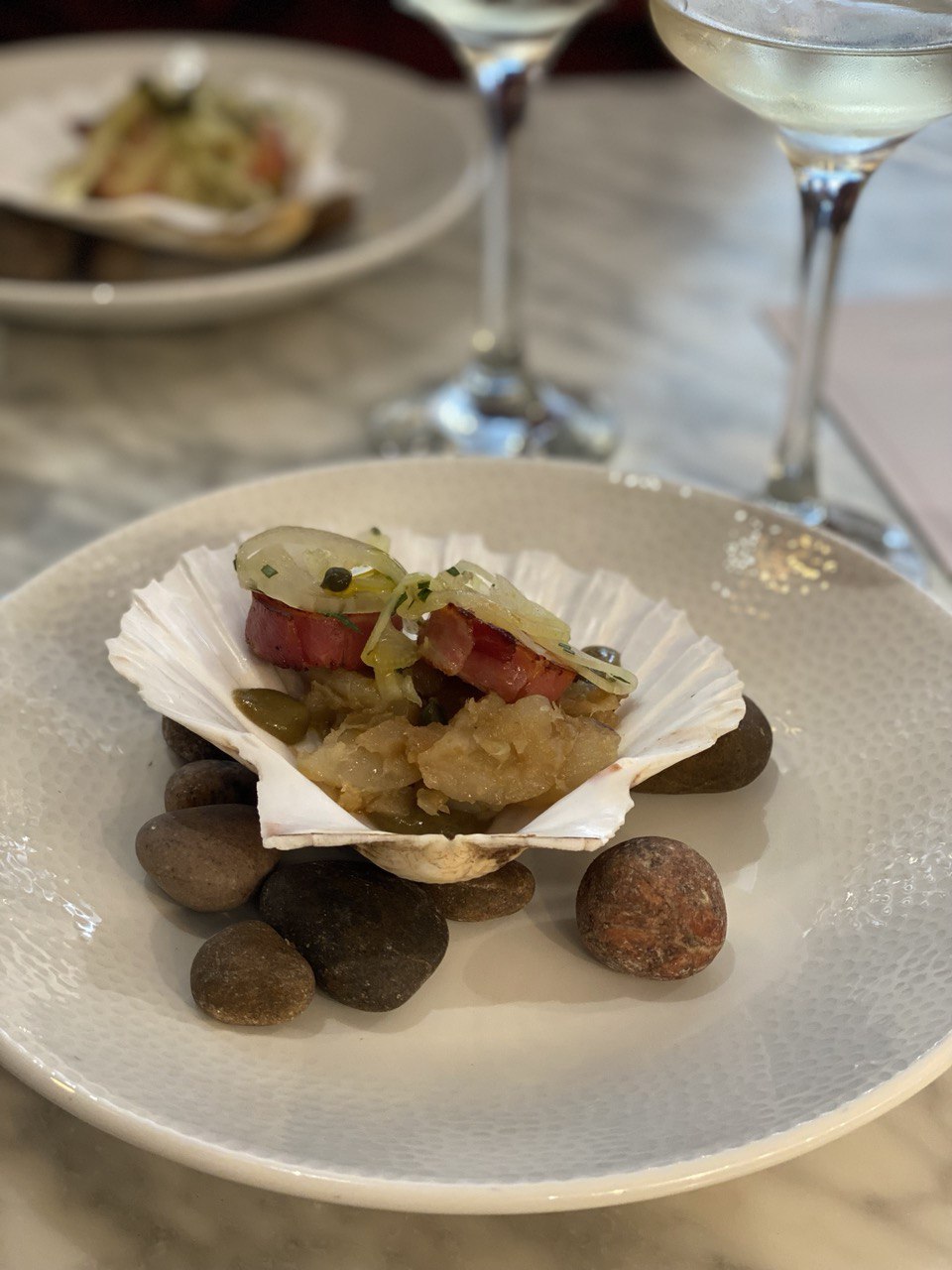
A chicken ballotine, crushed artichoke, brown shrimp, caper & raisin puree - all paired with white Domaine des Tourelles from Lebanon. The plating might be not that practical or exciting, but the flavour itself was great.
The Grand Finale ¶
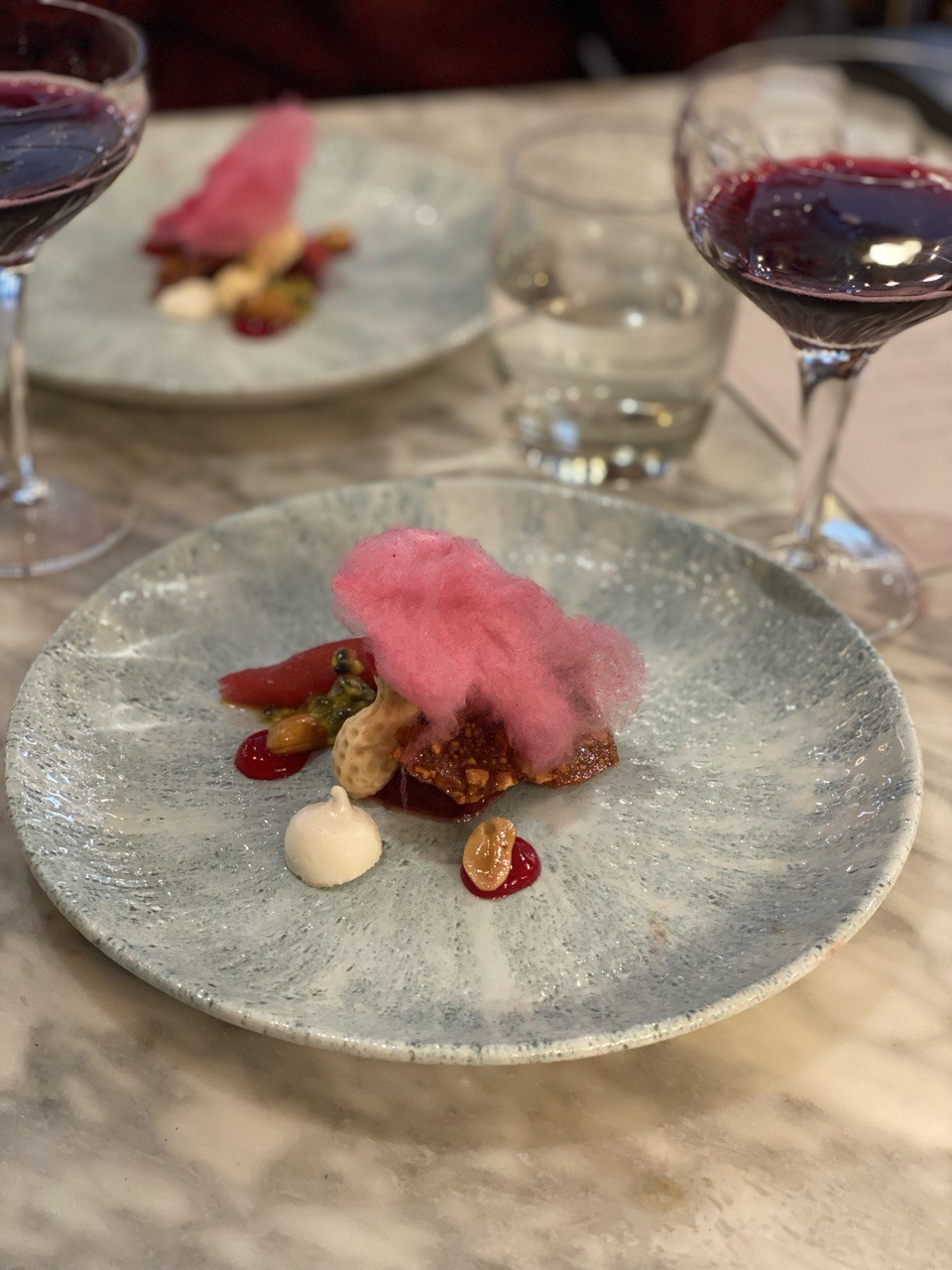
Probably the first time I enjoyed eating candy floss: a peanut butter parfait, rhubarb compote, blood orange, and candy floss. Paired with Cantina di Saliera from Emilia Romagna.
Old-Tabashioned Late Hour & Taketsuru Blossum ¶

Stalla Dhu Islay, Perique Tabac liqueur, Demerara & bitters - all smoked to pay a tribute to Davidoff cigars.
Nikka from the Barrel, hibiscus tea syrup, Crème de Figue, and Louis Roederer. An elegant cocktail named after Rita Taketsuru, the mother of Japanese whisky.
Things I enjoyed reading ¶
1. Who’s Afraid of the Dog-Banditti? by Stephanie Howard-Smith ¶
Seems like history tends to repeat itself: three centuries ago stealing dogs (whether to re-sell or to return for a ransom) was as common as it is nowadays.
However there were also slightly grimmer options:
There was a thriving market for dog-skin leather gloves, which were a must-have luxury item and reputed to moisturise the hands. Even the philosopher Jeremy Bentham, who argued against causing unnecessary suffering to animals, owned a pair.
2. I moved my workspace to VR, here's what I learnt by @backmeupplz ¶
While some companies argue whether people should work from home or from office, the author of this article takes it further and just works from VR:
The resolution is still too low. It does not compare to even having 1080p displays. It is almost like having multiple 720p 40" displays. I find reading text being not terrible at all, but still not good enough to "enjoy" it.
Given the resolution this is definitely not something I'd do as my eyes barely stand the monitor, but the field is definitely very promising.
Also I could finally decorate my office with animated "this is fine" meme vibes.
3. Why Thursday was fish day in the USSR by Alexandra Guzeva ¶
Growing up in post-Soviet times, I always knew that Thursday is the fish day.
I never thought of questioning it, even though we didn't really eat fish on a specific day only.
The official reason given was that Thursday would be the best day for fish sales. Another opinion holds that Thursday was chosen as a poke in the eye to Orthodox believers, since their fasting days are traditionally Wednesday and Friday (official doctrine did all it could to encourage atheism).
Workers did not like this day — fish dishes in the canteen were rarely tasty. As such, it was believed that fish day might negatively impact productivity, so it was set later in the week.
And even though I was eating fish in canteens way later, I can attest: it was never tasty.
4. The T-34 keyboard layout by Jonas Hietala ¶
A great and very geeky research into a perfect keyboard layout.
I could easily fit much more functionality into my layout if I needed to. The constraint isn’t space—it’s your ability to learn and get proficient with a complex layout. (And I don’t think it’s that hard to learn a new layout, but that’s a topic for another day.)
As someone still struggling with getting used to my mechanical keyboard (I know, it's been almost a year), I still love people who go above and beyond to make the best out of something. Respect!
5. Notes on Craft by Jonathan Lee ¶
Here is a good way to wrap up what's going on in a writer's head:
As you may be starting to notice, writers often seem to build a first sentence around a building. It doesn’t take Freud to work out why. Construction is on the author’s mind. The writer is building a world. Inviting you into a home. And they are probably sitting in their own real-life home while they do this. Hoping you buy enough copies of their book for them to stay there.
Chaining words into ideas is both powerful and hard, and the biggest challenge is to make it look so simple the reader might think they could do it as good as you.
6. On 'Biweekly' and 'Bimonthly' ¶
Whenever complexity of any language different from English is mentioned in a conversation with a native English speaker, the two meanings of the word "biweekly" is my go-to starting point for a rant on twisted English words.
For this, we are sorry. But we don't mean "sorry" in the sense that we feel penitence; we are not to blame. We mean "sorry" in the sense that we feel a kind of sorrow aroused by circumstances beyond our control or power to repair.
I appreciate that apparently locals do get confused by it as well, it's just there is not much they could do about it except not using the words anymore.
7. Writing a Technical Book by @soapdog ¶
I mentioned it in a past, and probably won't hurt to mention again: writing books is very rewarding in many senses, and these days it is easier than it ever was. This post is a great summary of the paths worth exploring for those considering such journey:
Many people think that self-publishing is the last option that an author should choose. That it only happens after they’ve been rejected by too many publishers, that they give up and self-publish. This could not be further from the truth. Many authors, me included, will consider self-publishing first and only go the traditional route if they can find a really good reason.
8. No Design is the Best Design by @bgrgndzz ¶
One of the few hills I am willing to die on: a perfect design is the one that doesn't exist. The closest examples are Google's original search page (only a text input and a button) and Uber's Apple watch app (huge button, pressing which orders a car to your current location).
Anytime you are designing an interaction, ask yourself, "who will use this?" and "what do they want to do?" More often than not, they will want to get to that goal as fast as possible. If I want to remember that I want to buy milk, I want to be able to add that to my to do list with as high bandwidth as possible. The interaction's speed should be limited only by my fingers' ability to type fast. Everything else is a distraction, and is bad design.
Instead, we should waste out lifes watching splash screen animations.
9. The Mystery of the $113 Million Deli by Jesse Barron ¶
A curious case of a mysterious deli with soaring stock prices:
Some of the ties were more confusing. Despite having minimal revenue, Hometown was paying Tryon a monthly consulting fee, for “experience in the fast-food business.” It was not obvious where this expertise came from, as Tryon's client list, according to its website, included a medical real estate firm, a golf supply company, a resort and “an insurance program for trees,” but no restaurants.
I wonder why so many beautiful movie-worth stories come out of Wall Street. Is it just that money attract all sorts of people?
10. Exploring android development on iPad by @arazabishov ¶
There is a post I never publish but edited multiple times over the last year, which is using an iPad as a replacement for Macbook.
It wasn't published because there is not much worthy publishing yet: Apple gets better at their development tools, and iPads get faster, but laptops just feel better to me yet.
However, the mobile dev loop is incomplete without running the app in an emulator or a physical device. To my knowledge, there is no way of running an ADB server on iOS, killing off chances of connecting an Android phone directly to an iPad. Hosting emulators on iOS is also not possible without jailbreaking the device or sideloading applications. Instead of hosting it, we can run it alongside Android Studio on a VM and connect to it using a VNC client.
Seems like at least Android is in a tad better place as it looks legit enough to take only an iPad in a short trip.
Things I didn't know last Tuesday ¶
1. Xuixo ¶
Over the last trip I had a chance to try this Spanish speciality:
It is a deep-fried, sugar-coated cylindrical pastry filled with crema catalana.
Although I must say it definitely looked way smaller than the classic one:
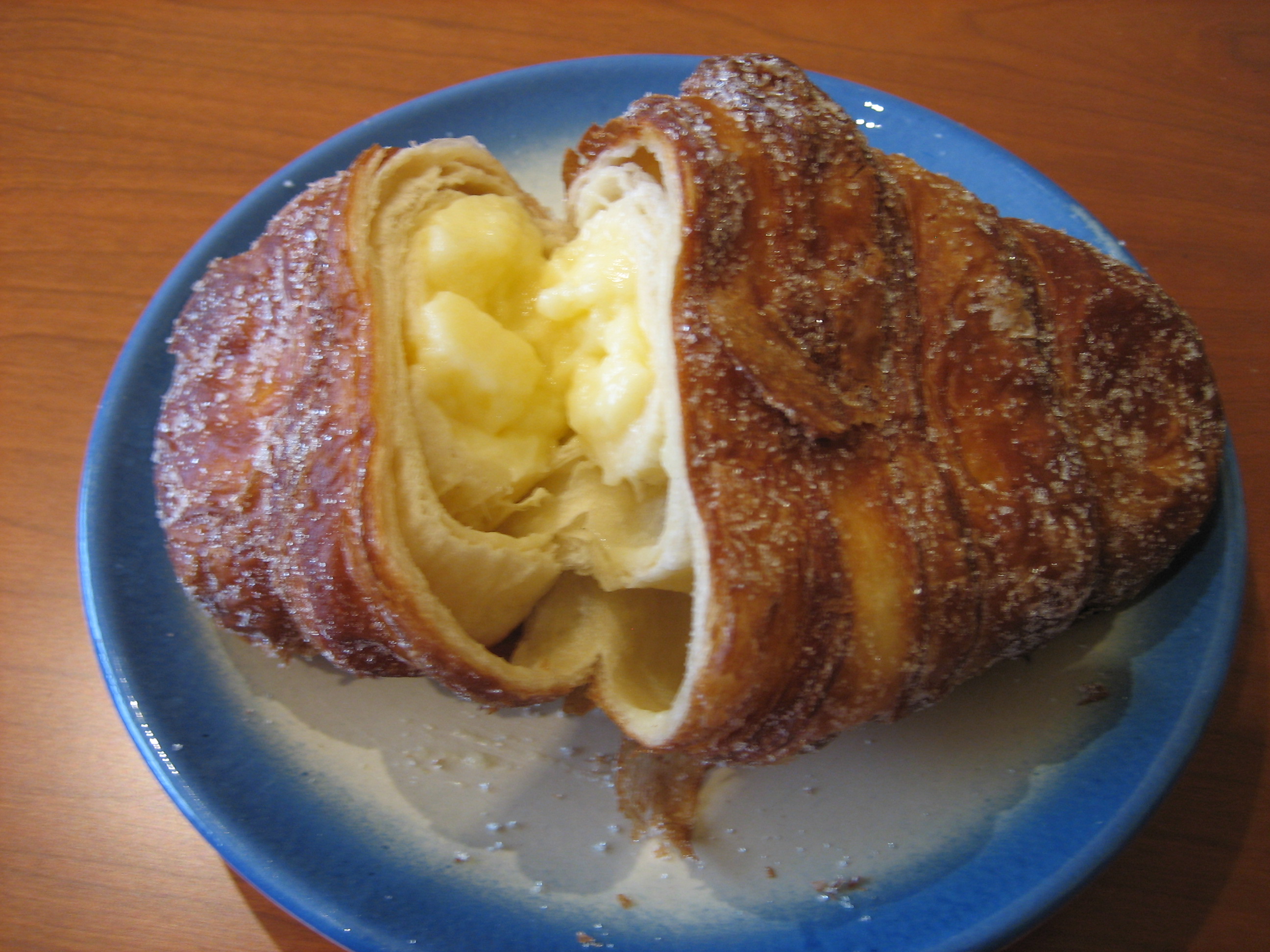
2. East Frisian tea ceremony ¶
Despite Germans being known for their love of coffee and beer, there is a small area that is very different from the rest of the country and they have their own tea ceremony:
Hosts add a piece of rock candy, or Kluntje in the regional dialect, to the bottom of each cup. The chunk of sugar is followed by a stream of tea. A tiny spoonful of whipping cream on top creates a visual effect called Wulkje, or “little cloud.” The mixture is actually not stirred at all, so that “the first sips are creamy, in the middle of the cup, it’s bitter, and at the bottom, it’s sweet,” explains Roth. And when the hot, strong tea is poured over the candy, it gives off a pleasant crackling sound. This, says Roth, is “the favorite sound of East Frisians.”
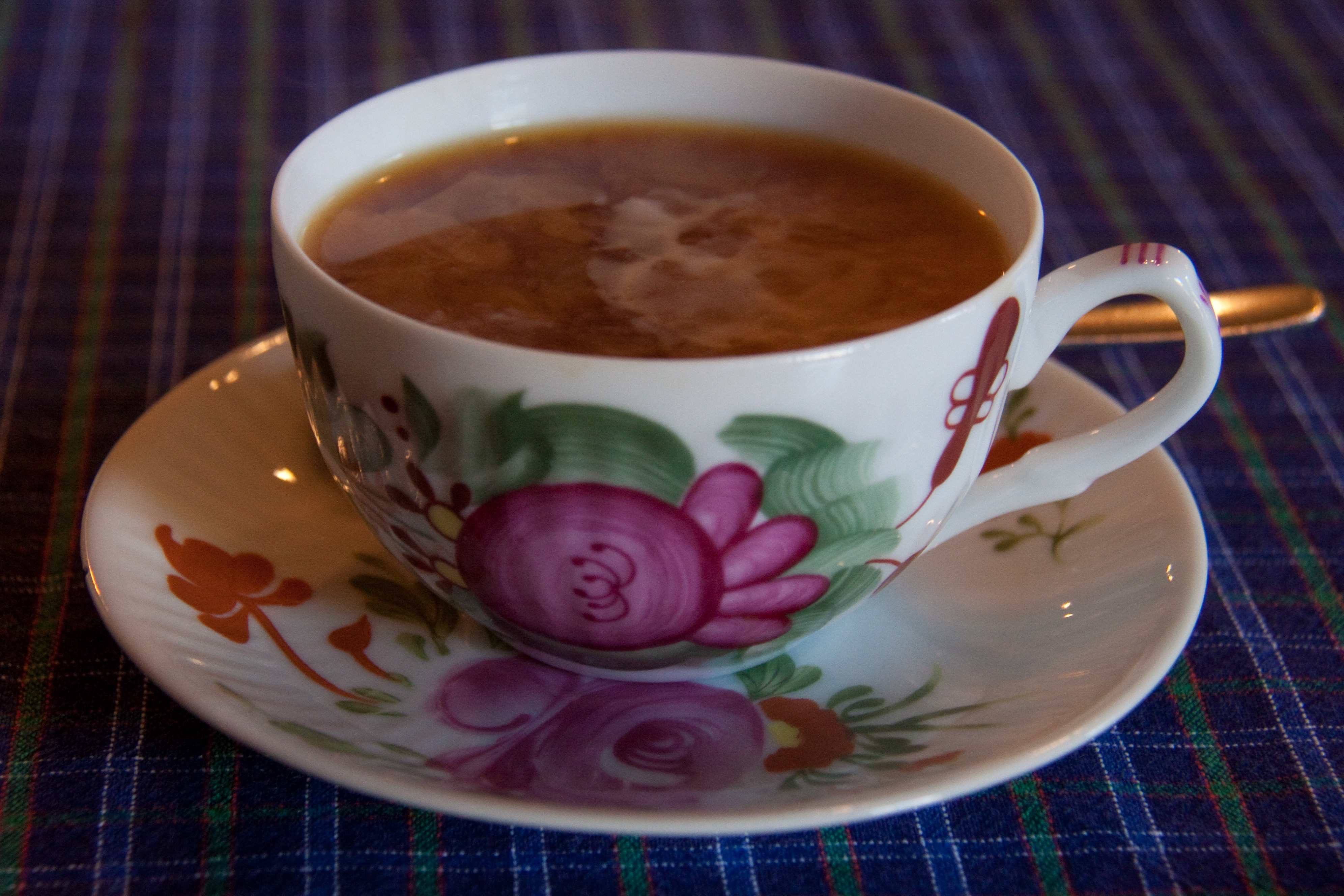
And also their own teaware.
3. Anthony Curcio ¶
This dude managed to steal money by hiring a bunch of people to dress like him and hiding in the crowd.
Curcio's planning culminated with an advertisement he placed on Craigslist a few days before the robbery. The online ad sought 15 to 20 workers for a fictitious city cleanup project, promising $28.50 an hour. The laborers were told to wear jeans, a blue shirt, work shoes, and a yellow safety vest. The ad also told the applicants they needed to bring safety goggles and a painter's mask. The ad directed them to meet in the Bank of America parking lot at the exact time Curcio planned to rob the armored car.
And nowadays he writes books for children. A happy end?
4. Battersea Reference Library ¶
Somehow tourists learn only about brutalism in London, while there is a plenty of other styles hidden in plain sight:
After a design competition, local architect Edward Mountford was selected to design and oversee the construction of the building. James Holloway began the construction of the building, but died before the end of the construction. His brothers’ company (Holloway Brothers) finished the building. Baron John Lubbock laid the first stone in May 1889, and the Library was opened in March 1890 by Anthony John Mundella, the Member of Parliament for Sheffield at the time.

5. Mexican Elbow ¶
While the story is obviously a lie, "mexican elbow" is a rather common nickname for lemon squeezers. No one knows why though:
Struggling to survive with the little food and water he had on him this lone ranger stumbled across a grove of lemon trees – in a bid to survive and sustain himself the lone ranger decided to take the fallen fruit and squeeze it for its juice and sustenance. Struggling to juice the fruit using brute strength and just his hands, as the story goes, the lone ranger decided to try and rip the fruits roughly in half, position the fruit on its side in between the inside of the elbow and bicep and use the natural leverage of pulling the forearm down towards the chest to juice the fruits in a far more efficient and less exerting manner.
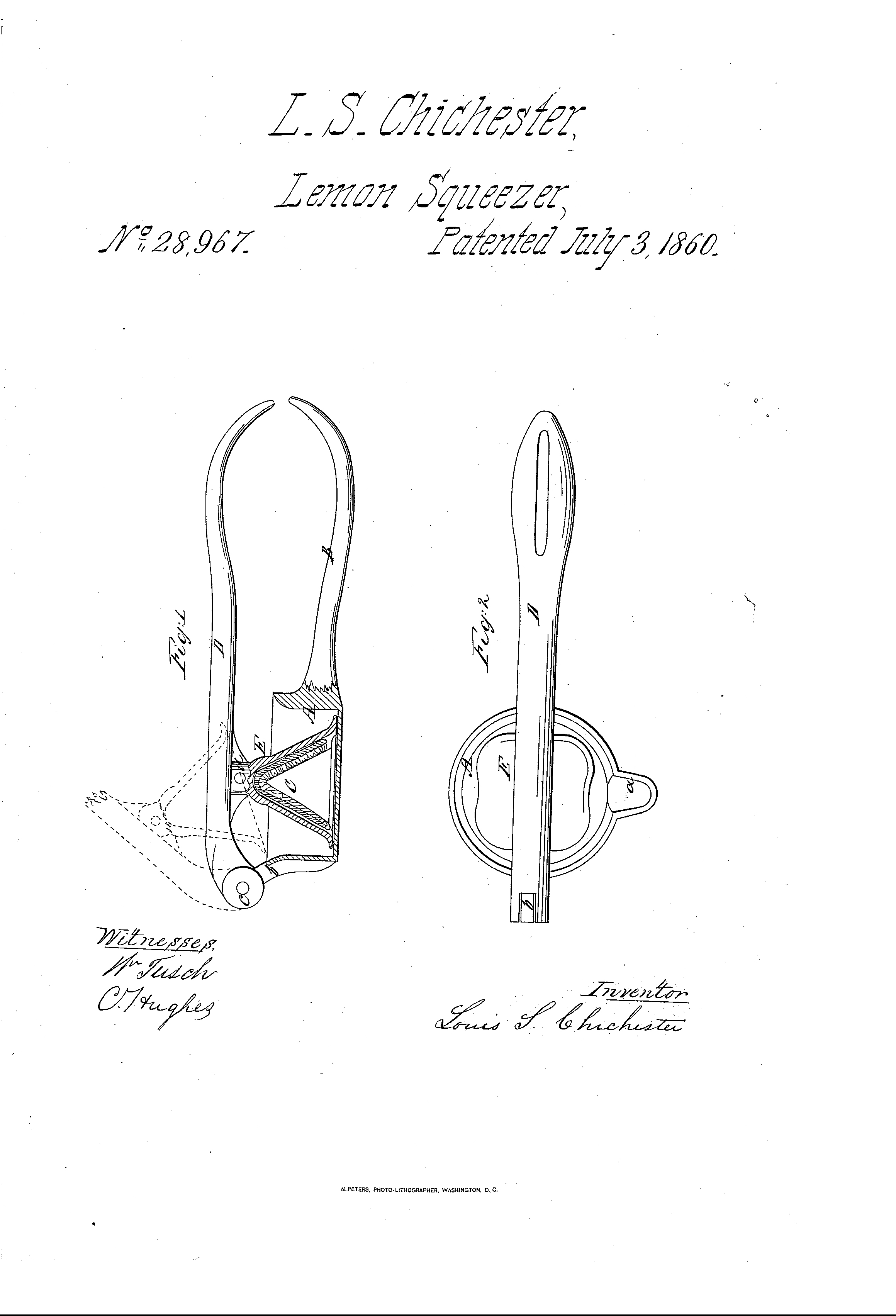
6. Xerox animation and Disney ¶
Apparently Disney's 101 Dalmatians was a breakthrough in animation technology as instead of copying designs by hand they started to use Xerox. It didn't work well initially as lines weren't as smooth, but that appeared to be fitting for the movie:
The sharp, angular features of Cruella de Vil, the infamous antagonist of Dalmatians, were accentuated by the dark outlines from Xeroxing. “When you see Cruella, she's very sketchy. Her lines boil all over the place, but somehow it works because it was controlled. It wasn't just boiling for boiling sake,” says Deja. Inspired by Cubism, animators stylistically adapted to the flattened graphics of Xerox. Animators weren’t able to move De Vil through space the same was as past characters, like Maleficent from Sleeping Beauty, and had to find a style of movement that fit the design of this character.
And because of it they got way more productive in the next decade.
7. Jacquard machine's punched cards ¶
We've visited a museum in Manchester a few days ago and among plenty exiting things there was a copy of one of the first Jacquard machines, used for textile manufacturing for a few centuries.
The Jacquard head used replaceable punched cards to control a sequence of operations. It is considered an important step in the history of computing hardware. The ability to change the pattern of the loom's weave by simply changing cards was an important conceptual precursor to the development of computer programming and data entry.
As someone who spent enough time punching cards to multiply matrices I at least know who to blame. Finally.
8. The price of batteries has declined by 97% in the last three decades ¶
A very welcome news on the way to optimising energy consumption:
Since 1991, prices have fallen by around 97%. Prices fall by an average of 19% for every doubling of capacity. Even more promising is that this rate of reduction does not yet appear to be slowing down.
The number of devices in use is probably growing even faster though.
9. Brier score ¶
This is a neat trick to estimate how good are one's predications and then "punish" or "reward" them based on multiple predictions in a row:
Next, how do we actually calculate the Brier score? It turns out that the Brier score is simply the mean squared error between the true outcomes and our forecasts, where 0 and 1 are the best and worst possible scores respectively.
10. Dollar Baby ¶
A well-known fact for many, but a naming surprise for me:
The Dollar Baby (or Dollar Deal) is an arrangement where best-selling author Stephen King grants permission to students and aspiring filmmakers or theatre producers to adapt one of his short stories for $1.
Pretty cool; I wonder how many stories are left to claim though.
Book of the week ¶
One of the dinners we had this week was paired with drinks, and the pairing was impressive in its matching.
I am constantly looking for better ways to match cocktails with food, and one overlooked way to it is to turn cocktails into food themselves.
There are obviously misunderstood examples, like a Bloody Mary filled with bacon, celery, and a half of a salad bowl, but there are also way better options.
Which led me to the Matthew Biancaniello's Eat your drink:
So, a year and a half into mixing cocktails and witnessing the effect I was having on the guests, I understood that I was slowly, one drink at a time, rescripting my relationship with alcohol. Making it something that was beautiful, fresh, and needing to be savored. And through this repetition, I unintentionally was able to heal my wounds, freeing myself to dive even deeper into my craft.
My favorite thing to hear from customers is not that this is the best drink they have ever had but that they have never had anything like it before.
The book itself is more about recipes and less about the thinking process behind them, but the author makes it relatively easy to trace back to the roots, and gradually builds up a palette one course at a time.
I am rather spoiled here, so unlikely could be impressed by some yuzu-infused tequila with clove-infused orange juice in a riff on Paloma, but cherry tomatoes stuffed with booze and glased with syrup sound like a cool snack nonetheless.
Thank you and see you in a week! ¶
If you have any questions, or want to suggest a link for the next newsletter, please drop me a message on Twitter or reply to this email.
Cheers! 🍸